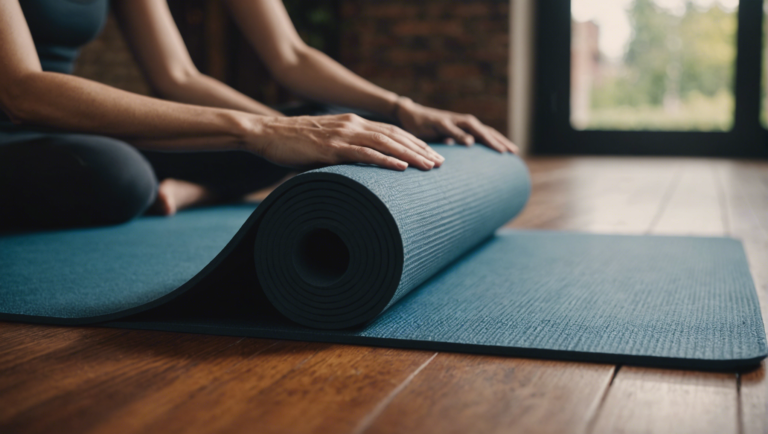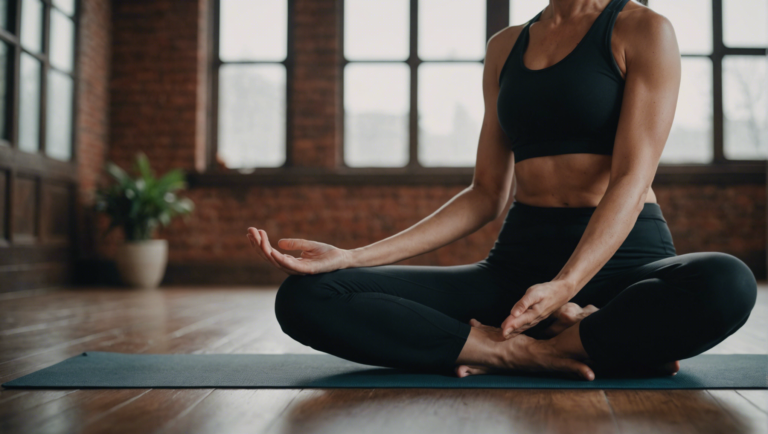Guidelines On How Many Times To Do Yoga For Optimal Results
The Importance of Consistency in Yoga Practice for Optimal Results
Regular practice is key to reaping the full benefits of yoga as a holistic discipline that harmonizes the body, mind, and spirit. Consistency in one’s yoga practice is crucial for achieving optimal results and experiencing the transformative effects that this ancient tradition offers.
The Significance of Consistency in Yoga
Consistency in yoga practice allows individuals to deepen their understanding of the poses, enhance their flexibility, build strength, and improve their overall well-being. It is through regular practice that one begins to notice subtle shifts in their body and mindset, leading to profound changes over time. Just as with any endeavor, progress in yoga is incremental and accumulative.
Developing a Routine
To establish consistency in yoga practice, it is important to develop a routine that aligns with one’s lifestyle and commitments. Setting aside a specific time each day for yoga helps create a habit that gradually becomes ingrained in one’s daily life. Whether it’s practicing in the morning to energize the body or unwinding in the evening through restorative poses, finding a dedicated practice time can significantly contribute to consistency.
Frequency of Practice
The frequency of yoga practice may vary depending on individual goals, preferences, and schedules. For beginners, starting with a few sessions per week can help in building familiarity with the practice and allowing the body to adapt. As one progresses, gradually increasing the frequency to a daily practice can lead to deeper immersion and integration of yoga into one’s lifestyle.
Striking a Balance
While consistency is vital, it is also essential to listen to the body and practice with mindfulness. Pushing oneself too hard or overcommitting to a rigorous practice schedule can lead to burnout or injuries. Finding a balance between consistency and self-care is crucial in sustaining a long-term yoga practice that nurtures both the body and the mind.
Integrating Yoga Off the Mat
Consistency in yoga goes beyond the physical practice on the mat. yogic principles into daily life, such as mindfulness, compassion, and self-awareness, extends the benefits of yoga beyond the yoga studio. Cultivating a holistic approach to yoga that encompasses all aspects of life enhances the transformative power of the practice.
Embracing the Journey
Yoga is a journey of self-discovery, growth, and transformation that unfolds over time. Embracing the process, staying committed to consistent practice, and being patient with oneself are key aspects of reaping the optimal results that yoga has to offer. Each step on the mat is a step towards holistic well-being and inner balance.
Consistency in yoga practice lays the foundation for realizing the full potential of this ancient practice and experiencing its profound effects on the body, mind, and spirit. By integrating regular practice, mindfulness, and self-care, individuals can embark on a transformative journey towards greater health, inner peace, and overall well-being.
Understanding Different Yoga Frequencies for Various Fitness Goals
Yoga is a powerful practice that can bring about numerous health benefits, both physically and mentally. One of the common questions that often arise for yoga practitioners is how often they should practice in order to achieve optimal results based on their fitness goals. Understanding different yoga frequencies for various fitness goals can help individuals tailor their practice to suit their specific needs and aspirations.
Importance of Consistency in Yoga Practice
Consistency is key when it comes to reaping the benefits of yoga. Whether you are a beginner or an experienced practitioner, establishing a regular practice routine is essential to see progress in your fitness goals. Consistent practice not only helps improve flexibility, strength, and balance but also enhances mental focus and overall well-being.
Yoga Frequency for Beginners
For beginners, starting with 2-3 yoga sessions per week is recommended. This frequency allows the body to adapt to the practice and build strength gradually. As a beginner, it is important to listen to your body and not push yourself beyond your limits. Slowly increasing the frequency as you become more comfortable with the practice is key to avoiding injuries and seeing improvement over time.
Yoga Frequency for Intermediate Practitioners
Intermediate practitioners who are looking to deepen their practice and enhance their skills can benefit from practicing yoga 4-5 times a week. This frequency allows for more consistency in building strength, flexibility, and focus. Intermediate practitioners can start exploring different styles of yoga and more challenging poses to further advance their practice.
Yoga Frequency for Advanced Yogis
Advanced yogis who have been practicing for a significant amount of time and have developed a strong foundation in their practice can aim for daily yoga sessions. Daily practice not only helps maintain the progress made but also allows advanced practitioners to explore advanced poses, breathing techniques, and meditation practices. However, it is important for advanced yogis to listen to their bodies and take rest days when needed to prevent burnout and injuries.
Listening to Your Body
Regardless of your fitness level or yoga experience, it is crucial to listen to your body and practice yoga mindfully. Some days you may feel more energetic and motivated to practice, while other days you may feel fatigued or low in energy. It is important to honor how you feel each day and adjust your practice frequency and intensity accordingly.
Final Thoughts
Understanding different yoga frequencies for various fitness goals can help individuals create a tailored practice routine that supports their overall well-being. Whether you are a beginner, intermediate practitioner, or advanced yogi, consistency, mindfulness, and listening to your body are key principles to keep in mind when determining how often to practice yoga for optimal results. Remember that yoga is a personal journey, and the most important aspect is to enjoy the practice and honor your body every step of the way.
Exploring the Relationship Between Yoga Frequency and Physical Health Benefits
Yoga has gained immense popularity in recent years for its numerous physical and mental health benefits. Many people practice yoga regularly to improve their overall well-being. One common question that often arises among yoga practitioners is the optimal frequency at which yoga should be performed to achieve maximum benefits. In this article, we will delve into the relationship between yoga frequency and physical health benefits to provide insights into how often one should practice yoga for optimal results.
Understanding the Importance of Yoga Frequency
Yoga is a holistic practice that combines physical postures, breathing exercises, and meditation. The frequency of practicing yoga plays a crucial role in experiencing its full range of benefits. Regular practice of yoga helps improve flexibility, strength, balance, and mental clarity. The more frequently you practice yoga, the more profound the effects can be on your overall health and well-being.
Factors to Consider for Optimal Results
Several factors come into play when determining how often one should practice yoga. These factors include individual goals, fitness levels, lifestyle, and time constraints. It is essential to listen to your body and understand its signals to determine the right frequency of yoga practice that works best for you. Beginners may start with a few sessions per week and gradually increase the frequency as they build strength and flexibility.
Finding a Balance
Finding a balance in your yoga practice is key to reaping its benefits. Overdoing it by practicing yoga too frequently without giving your body enough time to rest and recover can lead to burnout or injuries. On the other hand, practicing yoga infrequently may not yield significant benefits. It is essential to strike a balance that allows for consistent practice while honoring your body’s need for rest and recovery.
Optimal Yoga Frequency for Different Goals
The optimal frequency of yoga practice can vary based on individual goals. For general health and well-being, incorporating yoga into your routine a few times a week can be beneficial. To improve flexibility and strength, more frequent practice, such as daily sessions or every other day, may be recommended. If you are using yoga as a form of stress relief and relaxation, even a few minutes of daily practice can make a significant difference.
Listen to Your Body
Ultimately, the best way to determine the optimal frequency of yoga practice is to listen to your body. Pay attention to how you feel during and after each session. If you feel energized, refreshed, and rejuvenated, you are likely on the right track. If you experience pain, fatigue, or burnout, it may be a sign to dial back or modify your practice frequency.
The relationship between yoga frequency and physical health benefits is a personal journey that varies for each individual. By understanding the importance of yoga frequency, considering factors that influence optimal results, finding a balance in your practice, and listening to your body, you can determine the right frequency of yoga practice that suits your goals and lifestyle. Remember that consistency is key, and it is better to practice yoga mindfully and regularly rather than sporadically. Start by exploring different frequencies and finding what works best for you to embark on a fulfilling yoga journey towards optimal health and well-being.
Tips for Creating a Personalized Yoga Schedule for Maximum Effectiveness
Creating a personalized yoga schedule is essential to maximize the effectiveness of your practice and achieve optimal results. By tailoring your yoga routine to suit your individual needs and preferences, you can ensure that you stay motivated, consistent, and continue to progress in your practice. Here are some tips to help you develop a personalized yoga schedule that works best for you:
Understanding Your Goals and Needs
Before creating a personalized yoga schedule, take some time to reflect on your goals and needs. Are you looking to improve flexibility, reduce stress, build strength, or enhance your overall well-being? Understanding what you want to achieve through your practice will help you determine the types of yoga classes and practices that will best support your goals.
Assessing Your Availability
Consider your daily schedule and identify pockets of time where you can realistically commit to a regular yoga practice. Whether it’s in the morning before work, during your lunch break, or in the evening before bed, choose a time that works best for you and aligns with your energy levels.
Balancing Your Practice
When creating a personalized yoga schedule, aim to strike a balance between different types of yoga practices. Include a mix of dynamic, strength-building classes, slow-paced restorative sessions, and mindful meditation practices to ensure overall well-roundedness in your practice.
Setting Realistic Expectations
It’s essential to set realistic expectations when developing a personalized yoga schedule. Be honest with yourself about how many times per week you can realistically commit to practicing yoga. It’s better to practice consistently a few times a week than to burn out by overcommitting and then giving up altogether.
Listening to Your Body
Pay attention to how your body responds to different types of yoga practices and adjust your schedule accordingly. If you feel fatigued or sore after a particularly intense session, consider incorporating more restorative practices into your schedule to give your body time to recover.
Seeking Professional Guidance
If you’re unsure about how to structure your personalized yoga schedule or which practices best align with your goals, consider seeking guidance from a certified yoga instructor. A professional can help you create a tailored plan that takes into account your individual needs and limitations.
Tracking Your Progress
Keep track of your progress by maintaining a yoga journal or using a yoga tracking app. Note how you feel before and after each practice, any improvements you notice in your flexibility or strength, and any challenges you encounter. This feedback can help you fine-tune your schedule over time for maximum effectiveness.
By following these guidelines and tailoring your yoga schedule to meet your unique goals and needs, you can optimize your practice and experience the many benefits that yoga has to offer. Remember that consistency and self-awareness are key to developing a sustainable and effective yoga routine.
Overcoming Challenges and Staying Motivated in Your Yoga Routine
Ways to Overcome Challenges in Your Yoga Practice
For many individuals, maintaining a consistent yoga routine can be challenging. Various obstacles, such as lack of time, motivation, or physical constraints, may hinder one’s dedication to the practice. However, by implementing certain strategies, it is possible to overcome these challenges and stay motivated in your yoga journey.
Setting Realistic Goals
Setting realistic and achievable goals is crucial in staying motivated in your yoga routine. Rather than aiming for perfection or comparing yourself to others, focus on your personal growth and progress. Start with small goals and gradually increase the intensity and duration of your practice as you improve. Celebrate each milestone, no matter how small, to stay motivated along the way.
Establishing a Consistent Routine
Consistency is key to reaping the full benefits of yoga. Choose a set time each day to practice, whether it’s in the morning to start your day on a positive note or in the evening to unwind and relax. By incorporating yoga into your daily schedule, it becomes a natural part of your routine, helping you stay committed in the long run.
Exploring Different Yoga Styles
If you find yourself losing interest in your current yoga routine, consider exploring different yoga styles to keep things fresh and exciting. Whether it’s Vinyasa, Hatha, Ashtanga, or Yin yoga, each style offers unique benefits and challenges. Trying out new styles can reignite your passion for the practice and prevent boredom from setting in.
Finding a Support System
Having a support system can significantly impact your motivation levels in yoga. Joining a yoga class, participating in online yoga communities, or practicing with a friend can provide accountability and encouragement. Surround yourself with like-minded individuals who share your passion for yoga, and motivate each other to stay dedicated to the practice.
Listening to Your Body
One of the most important aspects of a successful yoga practice is listening to your body. Honor your body’s limitations and avoid pushing yourself beyond your capabilities, as this can lead to injuries and burnout. Modify poses as needed, take rest days when necessary, and always prioritize your well-being during your practice.
Mindfulness and Meditation
Yoga is not just about the physical postures but also about mindfulness and meditation. breathing exercises, meditation, and mindfulness practices into your routine can help reduce stress, increase focus, and enhance your overall well-being. By connecting with the present moment during your practice, you can find greater fulfillment and motivation.
Celebrating Your Progress
Remember to celebrate your progress and achievements along the way. Whether you finally mastered a challenging pose, increased your flexibility, or simply showed up on the mat consistently, take the time to acknowledge your dedication and hard work. Reward yourself for your commitment to your yoga practice, and let it fuel your motivation to continue improving.
Overcoming challenges and staying motivated in your yoga routine requires dedication, patience, and a positive mindset. By setting realistic goals, establishing a consistent routine, exploring different styles, finding a support system, listening to your body, incorporating mindfulness practices, and celebrating your progress, you can overcome obstacles and stay inspired on your yoga journey. Remember that yoga is a personal practice, and the most important aspect is not perfection but progress and self-discovery. Trust the process, stay committed, and enjoy the transformative benefits that yoga brings to your mind, body, and soul.
Conclusion
Yoga into your routine can significantly impact your overall well-being, both mentally and physically. Consistency is key when it comes to reaping the optimal benefits of yoga practice. Understanding the frequency that aligns with your fitness goals is crucial in achieving the desired results. Whether you aim for daily sessions or a few times a week, tailoring your practice to your individual needs is essential for progress.
Different frequencies of yoga practice can yield various benefits. For those looking to enhance flexibility and relaxation, a regular but moderate practice may suffice. On the other hand, individuals seeking to challenge themselves and improve stamina might opt for more frequent sessions. By striking a balance between intensity and recovery, you can customize your yoga routine to address specific fitness objectives.
The connection between yoga frequency and physical health benefits is multifaceted. From improved circulation and muscle tone to better stress management and mental clarity, the advantages of consistent practice are manifold. Research has shown that regular engagement in yoga can enhance cardiovascular health, boost immunity, and alleviate symptoms of conditions like anxiety and depression.
Crafting a personalized yoga schedule is essential for maximizing the effectiveness of your practice. Consider factors such as your current fitness level, time availability, and long-term goals when structuring your routine. Whether you prefer morning sessions to energize your day or evening practices to unwind, tailoring your schedule to suit your preferences can enhance adherence and motivation.
Staying motivated in your yoga routine can be challenging, but implementing strategies to overcome obstacles is key to sustaining long-term practice. Setting realistic goals, tracking your progress, and seeking support from yoga communities or instructors can help maintain your enthusiasm. Remember that consistency, not perfection, is the ultimate goal, and every session contributes to your growth and well-being.
The journey to optimal results in yoga practice is paved with dedication, self-awareness, and a commitment to personal growth. By understanding the significance of consistency, tailoring your practice to your goals, embracing the health benefits of yoga, creating a personalized schedule, and overcoming challenges with motivation, you can embark on a transformative yoga journey. Let your practice be a reflection of your inner strength, resilience, and commitment to holistic well-being. Embrace the mat, breathe deeply, and flow with intention towards a healthier, more balanced life through the power of yoga.


